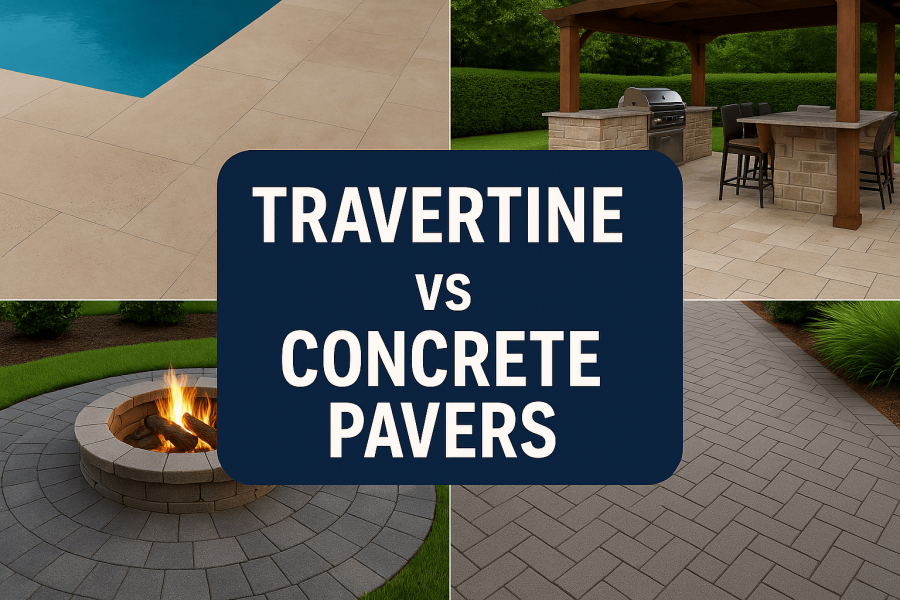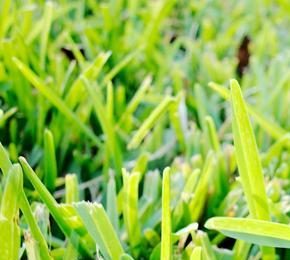- >
The Best Sod for Florida
- By: Jane Smith
- Date: Dec 21 2020
Similar Articles
Artificial Turf vs Sod for Lawns, Backyards & DIY Makeovers
Thinking about artificial turf or sod? Discover the pros and cons of each—from cost and maintenance to durability and pet-friendliness—so you can choose the best option for your lawn or backyard project.
Travertine vs Concrete Pavers for Florida Pool Decks, Patios, Fire Pits & More | bhild
Compare travertine and concrete pavers for Florida pool decks, patios, and driveways — from heat retention and slip resistance to cost, maintenance, and curb appeal.
Beat the Heat: Florida Summer Landscape Survival Guide
Beat the Florida heat with smart summer landscaping. From drought‑tolerant plants to shaded retreats, this guide covers designs, materials, and maintenance tips to keep your yard thriving all season long.
The best sod for Florida
Florida is one of the warmest states. The type of grass that is right for your property always depends on your climate. Growing grass in Florida is easy. It’s divided into three climates zones, with US department of agriculture plant hardiness zones going from 8 in the north to 9 in central Florida and to 10a to 11a in the south zone. The average annual rainfall varies from 40 to 62 inches. Warm-season sod grasses are best suited in Florida since they endure the best heat and humidity. Several species of grass grows well in the warm climate in Florida like Centipede Grass, Zoysia Grass, Bermuda Grass, Bahiagrass. Warm-season grasses are the best adapted to survive well in Florida. Always make sure you prepare the soil and fertilize well before planting it.
Sodding
Sod does great things for lawn and yards before, laying the new sods take the time to properly prepare the existing soil for healthy and new grass get your soil analyzed a month before installing new sod it will determine whether or not the soil is too acidic or has too much alkaline and needs certain nutrients to become a healthy baser for your new sod. First figure out how much sod you required for your yard or your lawn, multiply the length of the area you want to sod times the width to get the proper total square for sodding and to order the sod. To get your lawn level, use rake or shovel to break apart.
The best time to lay the sod is spring and early autumn. Because cooler temperatures and occasional rain help the sod quickly root into the soil. If you want to lay your sod during the summertime, water a few times to settle the soil and stay healthy and green. It’s best to water in the morning as the temperature rises towards the afternoon, much of the water will evaporate.
In case your soil is lacking any nutrients, then add accordingly from the soil test. For excellent surface for installing the sod go lightly not too heavy. During laying your sod make sure not to step on the sod as you lay it down. If you did, then make sure you racked out any footprints. You should position sod bricks snugly against one another but during this don’t overlap or leave spaces between strips of sod.
Centipede grass
Centipede grass is warm-season grass and low maintenance grass. This grass grows incredibly, well in poor and sandy soils and can survive in areas that have a pH low as 4.5, which is much lower than most other grasses. This is a warm-season grass that is very tolerant of high temperatures, which makes it a great option for use on lawns in the Florida and warmest states. Unlike other types of grass that are very picky and require perfect care to survive and thrive, this grass is known as extremely hardy.
Cost comparison
Centipede grass cost for $0.75 to $0.85 per square foot and for pallets it goes for $340 to $385
| Per | Price Range | Average Cost |
|---|---|---|
| Square Foot | $0.75 to $0.85 | $0.80 |
| Pallet | $340 to $385 | $380 |
Maintenance of centipede grass
It is very important to make sure that your centipede grass not only looks good but also it is healthy as well. This types of grass are very easy to care for, although there are few things that you need to keep in mind because of tender and easily damaged the grass. This grass is known to grow in partial shade. After the rain, if you notice that your rain is not drying out properly, then you may consider removing some overhanging limbs. This will allow grass to stay damp after rain and prevent proper growth. Very poorly draining soil will have to dress in the sand or a drainage system need to be installed.
Centipede grass must be mowed to the correct height to have the best growth and to remain hardy and durable. The homeowners who allow their centipede grass to grow over 2 will quickly see a decline in the health and appearance of their lawn, never mow the centipede grass before the growing season, but to mow it in weekly basis throughout the spring and summer once it has started to grow.

Centipede grass
Irrigation and Fertilizer
Centipede grass has minimal irrigation and fertilization requirements and can survive several weeks without irrigation or any rainfall. On sandy soil, it requires frequent watering. This centipede grass can easily grow well in soil that can kill other types of grass but then also it requires fertilizer and lawn care. The most important thing that needs to keep in mind is when fertilizing the grass in new growth is very delicate and can be easily harmed by fertilizers as well as pesticides. Centipede grass doesn’t have a very good response in heavy doses. You have to know how much fertilizer is required in the grass to see the best results.
It will be good if you use fertilizer which is free from phosphorous, never use too much nitrogen as this will damage your grass, you can aim for around 0.5 pounds per 1000 square feet of lawn. It is very important to understand how to fertilize your centipede grass that can help to look best, at the same time it can be very tempting to fertilize early in the spring. Apply fertilizer in April and June and then again in August and October. While applying fertilizer make sure you not too much as this will cause you to decline in the health and appearance of a lawn. It will grow darker when it has too much nitrogen, which you can take it as a clue that you have made a mistake in fertilizing the grass.
Lime and pH
The average lawn tends to do its best at a soil pH of approximately 6 to 7 on a scale of 0 to 14. A lawn which has a pH value below 7 is acidic, at 7 it is known as neutral, and above 7 it is alkaline. If your lawn has acidic soil, lime can be spread on the grass. It will help to increase the pH of the soil. It is typically applied via spreader similar to how you would put down traditional lawn fertilizer. To determine the pH of your lawn soil, you will have to do a soil test. This soil test is a very simple process.
Basically, lime is known as a soil amendment made from ground limestone rock. Which naturally contains calcium carbonate and magnesium carbonate. When we add lime to soil these compounds work to increase the soil’s pH making the soil less acidic and more alkaline. Even though lime includes calcium and magnesium in it. While applying lime, the ideal time to apply lime is in the fall and spring. Typical harsh elements during these seasons mostly help the lime break down and release into the soil. Lime is sold in 30 to 40-pound bags in pellet form that can be applied with a rotary spreader.
St Augustine sod
St Augustine is a native species in Florida and grows very well in Florida soil types. As it thrives in warm and temperature climates. Try to keep turfgrass and lush green as it requires weekly maintenance to optimize the growing conditions and encourage growth. St Augustine needs full sun lightly filtered shade, water regularly and deeply to keep the thatch and soil just below it moist at all time. But not consistently wet. so it can grow well. These warm-season grasses do best growing in rich, well-drained soil, in a warm humid climate. It requires water to stay and remain healthy and green.
Cost
| Per | Price Range | Average Cost |
|---|---|---|
| Square Foot | $0.35 – $0.75 | $0.55 |
| Pallet | $160 – $340 | $250 |
Fertilizer and Irrigation
St Augustine needs to be fertilized once a month from spring to fall with complete lawn fertilizer. Before applying starter fertilizer or organic matter to your lawn it will be good if you get your lawn tested every 2 – 3 years. Apply lime if the soil test required. Apply 1 pound of nitrogen per 1,000 square feet approximately 3 weeks after your grass begins to green up and not to add more than 3 pounds of nitrogen per 1,000 square feet per year.
St Augustine needs seldom irrigation in spring season due to spring rains. The least method of irrigation is to water when the grass needs it. If the lawn is established and its need irrigation then apply accordingly as needed. If leaf blades turn a blue-grey colour, or it looks wilted or curled and another way to tell is by walking across the lawn and then checking to see if your footprints are not going away, then now its time for irrigation. You should avoid watering at night because it will not work out, but instead, water in the morning hours so that soil surface has time to dry before evening.
Zoysia sod
Zoysia grass is native to Asia but has been popular in the US for more than 100+ years. It also depends on which region you live in, this grass is a turfgrass can be become a great choice or can also become a terrible choice. Zoysia grass is a creeping, warm-season grass that is known for the ability to withstand high temperatures, prolonged drought, and heavy foot traffic. This warm-season grass is native to Florida, Texas and other hot southern states. Zoysia grass will never grow well in cooler climates like northern side area. This grass will turn out brown and will die when it will be exposed to cold weather and also this grass will never perform well in shade area.
For quick growth, you should go with sod, as it will be very quick and will not take a long process. If you planning to plant in little shade area then it will take even longer time to grow. No one wants to plant Zoysia grass in cold areas this grass grows well in the chilly and harsh area which is southern states of the US. This grass had to plant in full sun to get good results and healthy growth.
Zoysia sod maintenance
Zoysia grass needs regular maintenance to look its best. As Zoysia grass has a dark and lush appearance so that need good care. Mowing and removing an excessive amount of thatch from the grass is also a part of maintenance. Watering Zoysia when its drought.

Zoysia sod
Irrigation and fertilizer
Zoysia grass doesn’t require that much of nitrogen as other lawns required, but it requires to be fertilized with nitrogen during its growing season to look healthy and best. While zoysia grass can grow in sandy soil it may need irrigation more often to maintain its attractive green colour.
Cost
| Per | Price Range | Average Cost |
|---|---|---|
| Square foot | $0.40 – $0.60 | $0.50 |
| Pallet | $180 – $270 | $225 |
Bermuda sod
Bermuda grass is a warm-season grass which expresses aggressively its need a full sun not a shade-tolerant grass and it will spread very fast. This grass grows well in the southern US as this grass needs heat and sun, unlike other grass that can still grow in the shade and will never struggle but Bermuda does well in full sun and direct heat for the day.
Bermuda grass maintenance
To make sure that your Bermuda grass looks amazing you need to take good care of the grass. Due to toughness and durable, many think it doesn’t require a lot of maintenance. But you need to work hard to take care of this grass to look more attractive. This grass has a very unpleasant habit of chocking out the plants that are growing there, which is why every owner need to make sure that they are taking good care of the grass and keeping it under control.
Bermuda grass cost
| Per | Price Range | Average Cost |
|---|---|---|
| Square Foot | $0.35 – $0.85 | $0.60 |
| Pallet | $160 – $385 | $275 |
Irrigation and fertilizer
Fertilizing Bermuda grass is very important to keep your lawn look best. First need to fertilize it for two weeks after it has turned green in spring, which is in April. Grass needs to be fertilized again around six to eight weeks later in June, and in August for the best results. Applying fertilizer four to five times in summer months can damage the grass. The Bermuda grass can easily grow in soil that has a wide range of pH levels. It means that you don’t need to worry about treating your soil and changing the pH levels to ensure the best growth for your grass. There are few different types of organic fertilizer that are used for Bermuda grass, including nitrogen, phosphorus and potassium fertilizers. These are the key and best nutrients that Bermuda grass needs to grow best and healthy.
Bahia sod
Bahia grass is a very good choice for Florida lawns where the soil is sandy or infertile. As Bahia grass has a deep root system that can provide tolerance to drought, this grass doesn’t require a lot of fertilizer. Bahia grass will not become a dense, dark green cover like other grasses, this grass is a low-maintenance grass. This grass grows very well in full sun and doesn’t tolerate shade.
Bahia sod Maintenance
Bahia grass is a low-maintenance grass, this grass requires mowing and infrequent fertilizer. During active growth of Bahia grass, it should be mowed every 7 to 14 days to a height of 3-4 inches.

Bahia grass
Fertilizer and irrigation
Fertilizer rated for 16-4-8 or 15-4-15 this both are very good fertilizer for Bahia grass. Fertilizing with the fertilizer which has iron supplement in its iron will turn a dark green colour. Fertilize with 2-4 pounds per 1000sq Ft we can adjust according to our zone, in the north side it requires more and in the southern side, it requires less. Water Bahia when it shows the sign of needing water the sign it leaf blades begin to fold up when footprint becomes visible in the grass then only you irrigation is required.
Bahia cost
| Per | Price Range | Average cost |
|---|---|---|
| Square Foot | $0.20 – $0.40 | $0.30 |
| Pallet | $90 – $180 | $135 |
Sod colour
Centipede grass has a natural light green colour. When centipede grass found dormant then the colour will be burnt red colour which is less attractive.
St Augustine sod
St Augustine is coarse-textured with a very thick grass blade that rounds at the top and becomes more compacted towards the soil. This sod has a dark green colour.
Zoysia sod
There are many different types of Zoysia grass available, and all vary from each other. The colour of Zoysia grass is attractive deep green colour, grows smoothly together and does a great job in standing up without any damage.
Bermuda sod
Bermuda grass expresses aggressively its need a full sun not a shade-tolerant grass and it will spread very fast. There are many different types of Bermuda grass and it has a dark green colour.
Bahia sod
Bahia grass is a good choice for Florida lawns where the soil is sandy or infertile. It has a deep root system to provide tolerance to drought. Plant Bahia grass in full sun it has a natural green colour.





